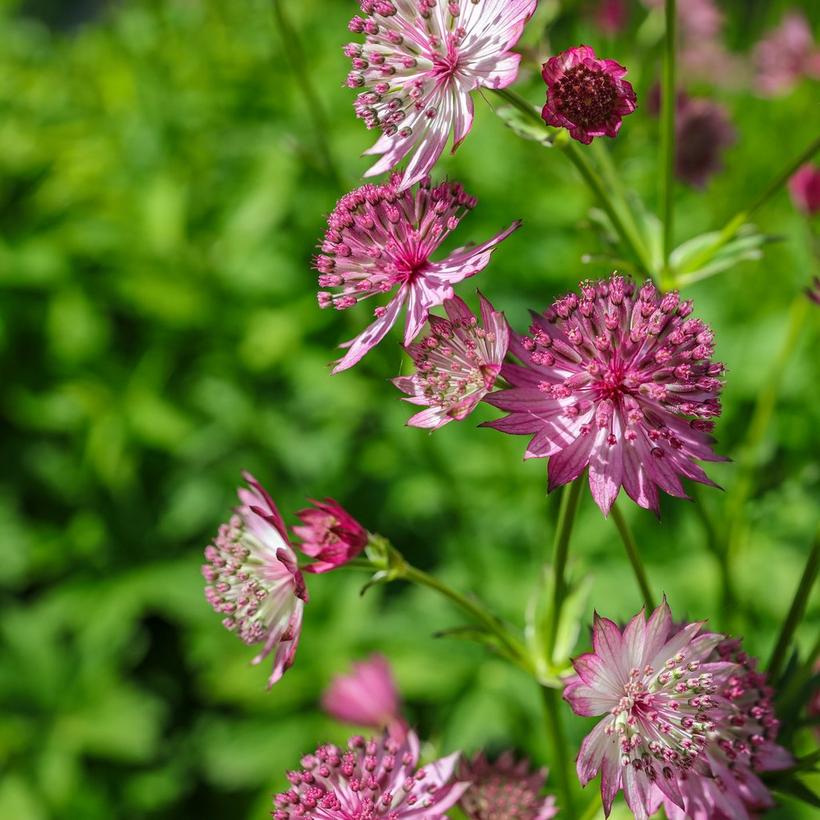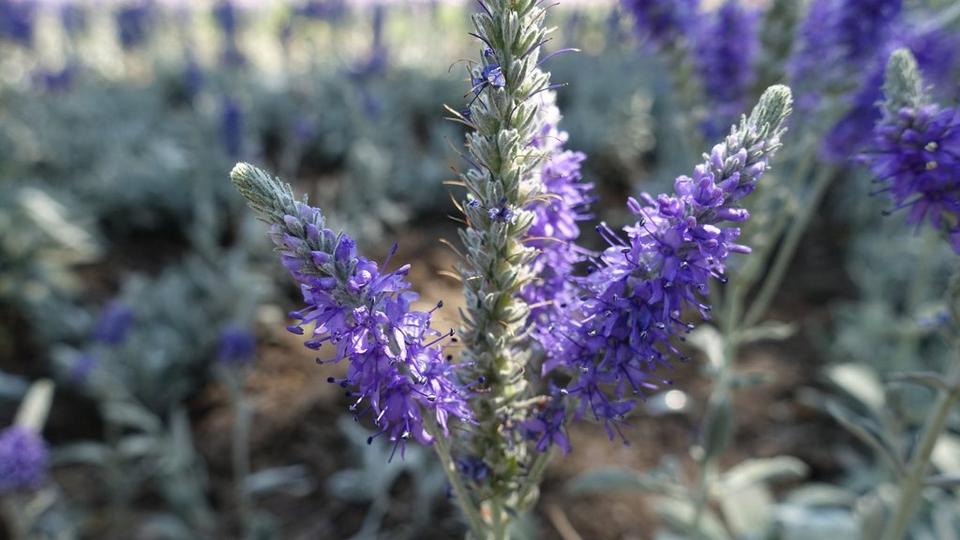The Ultimate Guide to Astrantia
Read time - 5 mins

When Monet said, “I must have flowers, always and always”, I’m convinced he meant peonies and honestly? Same. When I’m not lusting after their perfect petals or saving a bouquet from a too sunny windowsill, you’ll find me at home raising the next generation of flower lovers (think sticky hands and zero vase etiquette).
When Monet said, “I must have flowers, always and always”, I’m convinced he meant peonies and honestly? Same. When I’m not lusting after their perfect petals or saving a bouquet from a too sunny windowsill, you’ll find me at home raising the next generation of flower lovers (think sticky hands and zero vase etiquette).
The clue’s in the name when it comes to astrantia – it comes from ‘aster’, Latin for star, because they look similar to something you might find twinkling in the heavens. A delicate wonder, it’s a favourite in cottage gardens and in wedding bouquets – but there’s lots more to this lovely bloom than that. Join us as we get up close and personal with this sweet flower in our ultimate guide to Astrantia.
A quick introduction to astrantia
Astrantia is actually a genus of plants that includes, according to Kew Gardens’ plant database, 10 species. Well established in the UK, it was first cultivated here in the 16th century.
Their name, like we mentioned, comes from the Latin for star, but astrantia also goes by common names too including great masterwort, melancholy gentleman, and Hattie’s pincushion (we love that one, it definitely looks like a pin cushion but we would love to know who Hattie was! Answers on a postcard please).
Growing rapidly to be about one or two feet tall in just one season, Astrantia comes in a variety of colours, ranging from green through to cream, pink and deep reddish-purple. Astrantia’s tiny, delicate, star-shaped flower heads are held on fine stems radiating from a central point with a ruff of bracts (bits of the flower that look like petals but are actually a kind of leaf) protecting them and their seeds.
Astrantia meaning and symbolism
Astrantia has collected a whole host of meanings in its long cultural history. Now astrantia is said symbolise strength and bravery but also innocence. Some say it also represents balance and harmony (perhaps thanks to those uniform petals). It also has its appearance to thank for the meaning of ‘fragility’ sometimes attached to it, those star shaped blooms are certainly delicate.
Astrantia facts
-
Astrantia is in the same family as the carrot (that’s Apiaceae or Umbelliferae if you really want to do some plant nerdery).
-
It’s not a top pollinator favourite when it’s growing, but it still attracts a happy selection of buzzy friends including bees, wasps and hoverflies.
-
They’re perennials which means they come back year after year. There’s research to suggest perennial crops are better for the environment because they establish longer roots, trapping carbon and water. We like to think that can apply to garden perennials too.
-
They’re native to parts of Europe and Causcasus, popping up in meadows, under trees and near streams.
Types of Astrantia
Astrantia major
Astrantia bavarica
Astrantia carniolica
When to plant Astrantia
If you’re starting out with seeds, you’ll want to sow them in March and April. If you’ve got a plant you’ll ideally pop it in the garden from April onwards, you can plant astrantia through the summer. The reliable Gardener’s World has some good videos on sowing and planting.
How to care for Astrantia
Given that it started out in the moist woodlands of Europe and Asia, astrantia is at its happiest when in damp, heavy, regularly fertilized soil and dappled shade, jostling for space with other plants. Try and find a fairly shady spot where your astrantia can take up lots of water from the soil. And do make sure you water your plant well if it’s dry, especially when the plants are young.
Astrantia are quite robust plants so they can mostly be left to their own devices. You can cut them right back in autumn or spring and they should bounce back again soon enough.
When does Astrantia bloom?


How do I use Astrantia in a bouquet?
According to flower expert Su Whale, astrantia goes really well with other delicate summer blooms like stocks, nigella or spray roses. It’s very sculptural so if you’re crafting your own bouquet you can definitely add some softer textures in.
It usually lasts five to ten days in a vase, but that doesn’t mean it has to go in the compost after that.
We really love astrantia dried, and it dries really easily. Before it starts to droop and fade, whip it out of the vase and hang it upside down. Just remember those heads are very delicate, and will be even more so once they’re dried – so handle with care!
Astrantia FAQs
No! This beautiful bloom doesn’t attract many unwanted visitors (aka pests) and if it’s in a nice shady spot and watered well, it’ll happily tick along.
Yes! Like we mentioned above it dries beautifully. Just hang it upside down and be patient. Then once it’s fully dried display your sculptural stems somewhere pride of place.
Happily yes, astrantia is a perennial which means it comes back year on year. It can also self seed, so you might spot new astrantias popping up nearby.



